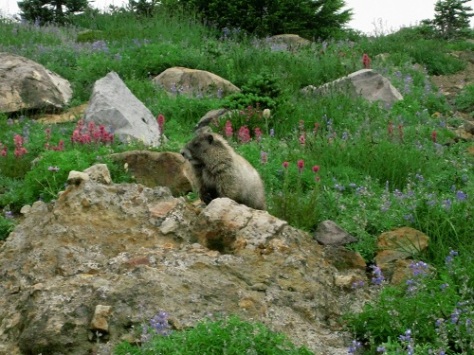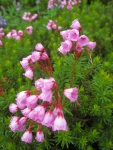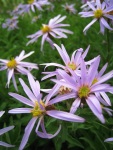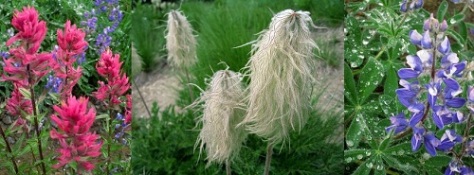Click images for slideshow view.
Monthly Archives: August 2013
Mount Rainier National Park
“Some say the world will end in fire,
Some say in ice.
From what I’ve tasted of desire
I hold with those who favor fire.
But if it had to perish twice,
I think I know enough of hate
To say that for destruction ice
Is also great
And would suffice.”
—Robert Frost
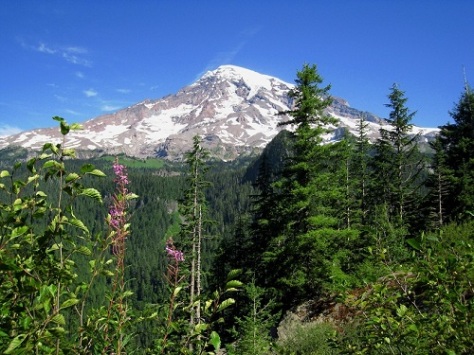
Mount Rainier National Park is about 90 miles south of Seattle, and, if you’ve ever been to that city, you know that Mount Rainier, the tallest peak in the Cascade Range, dominates the landscape. While I had seen it from afar on numerous trips, this was my first time in the park itself.
Mount Rainier is actually a massive volcano, technically still active. Yet, this simmering cauldron also receives record amounts of precipitation every year and is home to twenty-five major glaciers, the most permanent ice on a single peak in the continental United States. This mixture of fire and ice results in a short, but incredible, wildflower season.
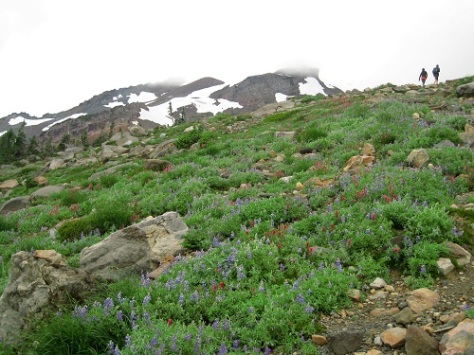
Mount Rainier is fairly easy to work into a longer road trip as one can enter and exit from opposite sides of the park. Due to lodging availability,* I was not able to follow the road as logic might dictate, but I write below as if did, starting at the Nisqually Entrance in the southwest corner as most visitors do. The park fee for one vehicle is $15 per week, or free with a national parks annual pass.
Longmire is the first distinct settlement you reach (after seven miles) when arriving via the Nisqually Entrance. It is characterized by forests of Douglas firs, western red cedar, and western hemlock. This area, now a National Historic Landmark District, was “discovered” by John Longmire in 1883 and settled by the Longmire family in 1888–1889 as a mineral spring spa, ten years before the park was officially established.

The Trail of the Shadows is a 0.7-mile self-guided loop that explores the history of the Longmire Springs Resort and the plants and animals found in the region. It begins across the park road from the Longmire Museum and the National Park Inn. There are other trails, but they seemed less interesting to me than those in other areas of the park.

The National Park Inn is much smaller (only 25 rooms) and quieter than the Paradise Inn found higher up on the mountain. Like many national park lodges, there is no air conditioning, telephone, or television in your room, so be forewarned. Most rooms in this lodge have private bathrooms, although mine did not. Of course, I was only there for one night, so it didn’t really matter to me. If you are not making last-minute reservations, ask for room 12, 14, or 16, as they are the ones with this incredible view:
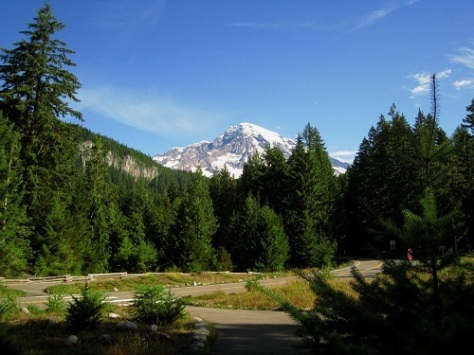
As you leave Longmire and travel east along the park road, there are a couple of good places to stop and take in the views. One is Ricksecker Point (seen at the top of this post), an offshoot loop from the main road that provides an excellent view of the mountain. The second is Narada Falls, a 168-foot waterfall in the Paradise River. In addition to the view from above, you can walk down to a viewing area at the base of the falls. Both of these detours are clearly marked and have ample parking.
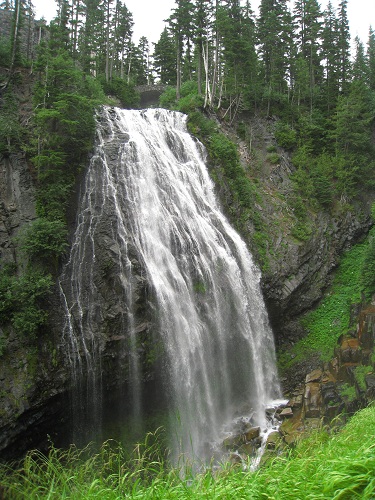
Just past Narada Falls, at the base of the Nisqually Glacier, is Paradise, so-named (according to legend) by James Longmire’s daughter-in-law, who exclaimed that the gorgeous fields of subalpine wildflowers looked “just like paradise” to her. Having seen these meadows at the height of their summertime glory, I certainly believe it. There are over forty species of flowers that bloom here and I feel as if I saw all of them.
Click here for the complete wildflower gallery.

Unsurprisingly, this is the most popular area of the park, which means there are generally large crowds of people and a huge parking problem, which was extremely frustrating as a guest of the Paradise Inn, conveniently located right next to the park’s main visitor center, with an impressive lobby that itself draws in the tourists. Despite the traffic, especially as compared to the National Park Inn, I think I preferred staying at the Paradise, since the wildflowers really are beyond compare and there is great hiking to be had up and down the mountain. I highly recommend staying at least one night so you can sneak in an early hike while the animals are still out and you have the mountain mostly to yourself. My room had a private bathroom, but only a few of them do so be sure of what you are reserving.

The Nisqually Vista Trail, a 1.2 mile loop that I walked in the early evening after checking in, was a great introduction to the Paradise area. It provided a fabulous view of the Nisqually Glacier, which is 4 miles long and flows downhill 6-12 inches a day.
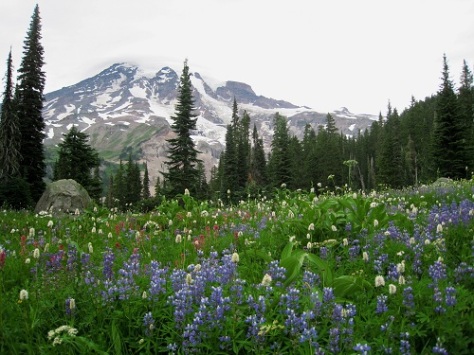

For a longer hike, you can tackle the Skyline Trail, a 5-mile loop that takes you up to Glacier Vista (via a trail that was still partially covered with snow when I visited) and Panorama Point and past Myrtle Falls on the return. Skyline intersects with many other smaller trails so there are many options in case you are not up to doing the entire route.
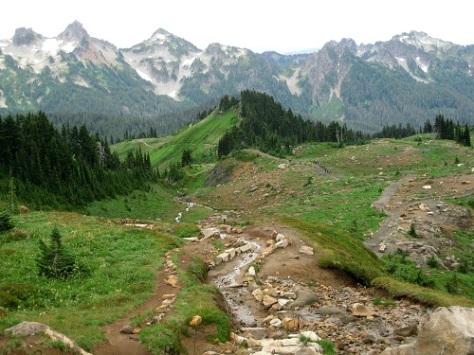

Beyond Paradise, the precipitous road follows Stevens Canyon, down to the southeast entrance of the park. Along the way, one passes Reflection, Bench, and Snow Lakes as well as the Box Canyon gorge. If you want to hike, I would suggest the lake area, otherwise this stretch was mostly a series of scenic overlooks and short walks.
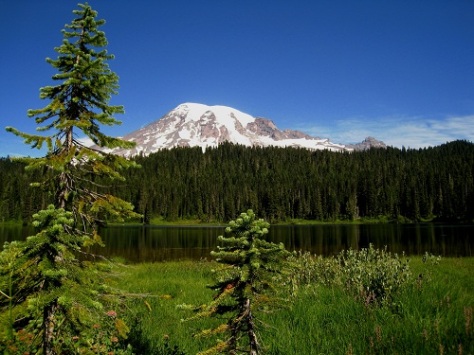
Near the Stevens Canyon Entrance is the Grove of the Patriarchs, a 1.5-mile loop over a shaky bridge to an island housing an old-growth forest. While the trees are impressive, they don’t hold a candle to the redwood forests of California, so, if you’ve seen those, I wouldn’t go out of your way here.
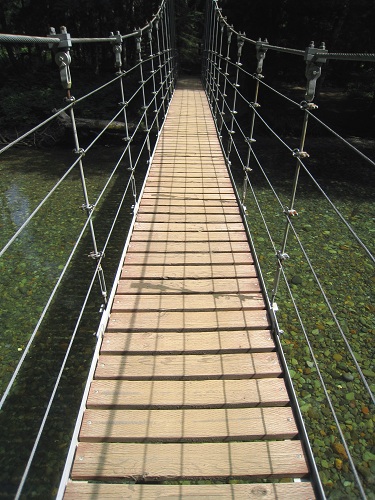
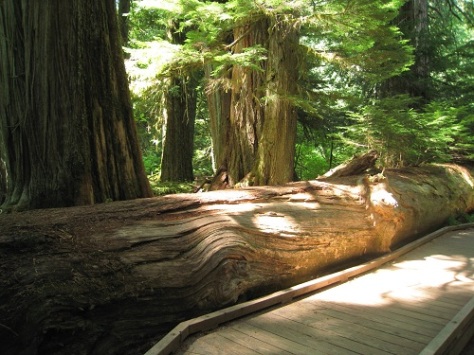
At 6400 ft, Sunrise is the highest point on Mount Rainier accessible by car. Although there are some significant hikes here that make this area a popular stop, I saw it on my way out of the park and felt it was a bit of a letdown after Paradise. However, if you arrive late in the day at the Paradise Inn, I might suggest heading here first the next day to catch the morning light and winding your way back to Paradise afterwards, because the 1.5-mile Sunrise Nature Trail would serve as a good introduction to the region’s floral and fauna.
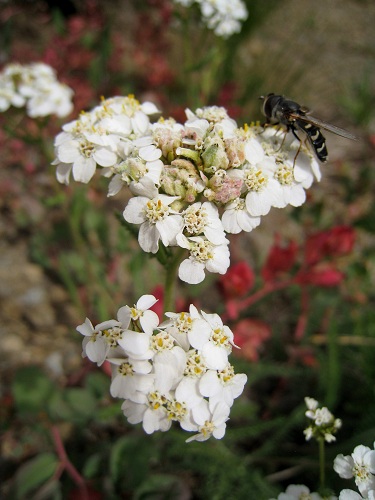
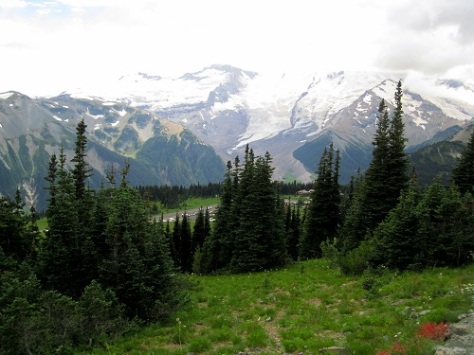
*Mount Rainier National Park has two in-park lodges: The National Park Inn is six miles from the Nisqually Entrance at an altitude of 2,700 feet, while the Paradise Inn is thirteen miles further along Highway 706 and much higher up and closer to the mountain at 5,400 feet. Since my plans were made at the last minute, I had to be persistent and call repeatedly to snag two nights via cancellations. (I was advised to call seven days ahead of my stay since that is when the cancellation policy takes effect. Although I started calling before that, sure enough, it was at the seven-day mark that I managed to finally snag my rooms.) Unfortunately, I was not able to book two nights at the same lodge. While annoying, my Libra nature derived some satisfaction from the fact I wasn’t made to choose between them.
